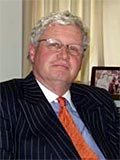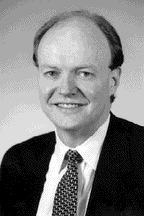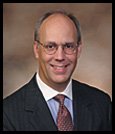Frederic Delano's 'Family':
U.S. National Capital Planning Commission,
the "Committee of 100", and Covington & Burling
D.C. Sports and Entertainment Commission gets into "bringing Major League Baseball back to Washington, D.C." with the help of Covington & Burling the firm with the connections in representing a great portion of the business of professional sports: at least as early as Spring 2002
2002 Stadium study has site that directly conflicts with NCPC's Extending the Legacy South Capitol Frederick Douglass Mall/Promenade; yet where is there any indication that NCPC objected?
2002, December 18, "Committee of 100" testimony that it does not object to list of stadium site options with the "M Street" South Capitol site.
2003 February release of NCPC South Capitol Street Urban Design Study; it is reported to public 5 months later in July 2003. It abandons SCap Promenade ostensibly to avoid eminent domain which is nonetheless embraced for real estate development , such as the Nationals Stadium..
Why does NCPC and "Committee of 100" abandon the Promenade -- a decision which physically accommodates a campaign by the DC Sports and Entertainment Commission and Covington & Burling that would work for placing Nationals Stadium to block the Promenade -- without evident controversy or debate?
Only God and those involved know.
But it is worth noting that both NCPC and Committee of 100 are "cousins" of sorts, and "offspring" of the families of, you may have guessed it, Covington & Burling.
James Harry Covington (August 15, 1863 – May 14, 1939) was an American jurist and politician. He represented the Maryland's 1st congressional district in the United States House of Representatives from 1909 to 1914, and served as chief justice of the Supreme Court of the District of Columbia from 1914 to 1918.
Covington was born in Easton, Maryland, and attended the Maryland Military Academy at Oxford. He entered the law department of the University of Pennsylvania at Philadelphia in 1891, attending at the same time special lectures in history, literature, and economics, and graduated in 1894.
Soon thereafter, Covington began to practice of law in Easton. He was an unsuccessful Democratic nominee for the Maryland State Senate in 1901, and served as State’s attorney for Talbot County, Maryland, from 1903 to 1908. He was elected as a Democrat to Congress in 1908 and served the 1st Congressional district of Maryland from March 4, 1909 until his resignation on September 30, 1914, to accept the position of chief justice of the Supreme Court of the District of Columbia.
Covington served as chief justice of that court from October 1, 1914, to June 1, 1918, when he resigned to practice law in Washington, D.C.. He was a professor of law at Georgetown University from 1914 to 1919, and was appointed by President Woodrow Wilson as a member of the United States Railroad Commission in January 1918. He and Edward B. Burling established the law firm of Covington & Burling on January 1, 1919. Covington died in Washington, D.C., and is interred in Spring Hill Cemetery of Easton.
Covington served as Worthy Grand Master on the Supreme Executive Committee of the Kappa Sigma Fraternity from 1892–1894.
The entity today known as Covington & Burling was founded in 1919 by J.H. Covington, a former U.S. Congressman from Maryland; the firm got its current name in 1924 when it was joined by Chicago RR lawyer Edward Burling. He was married to (Louise Peasely) the sister of (Mathilda Peasely) wife of Frederic Delano, an uncle of 1933-45 U.S. President Franklin Delano Roosevelt. involved with numerous endeavors
Kappa Sigma Official SiteKappa Sigmas are taught to live their lives by the Star and Crescent, which are the symbols of the Fraternity that make up the official badge:
The Star and Crescent shall not be worn by every man, but only by him who is worthy to wear it. He must be a gentleman... a man of honor and courage... a man of zeal, yet humble... an intelligent man...a man of truth... one who tempers action with wisdom and, above all else, one who walks in the light of God.[9]
The Star and Crescent is also used as part of the guidlines behind Kappa Sigma's strict no-tolerance anti-hazing policy. The Fraternity takes all allegations of hazing very seriously and routinely pulls charters from guilty chapters which can be as old as 130 years.
They also follow the four cornerstones of the Fraternity: Fellowship, Leadership, Scholarship, and Service.
http://en.wikipedia.org/wiki/Kappa_Sigma
Edward Burnham Burling (1871–1966) was a prominent American lawyer and the name partner of the Washington, D.C.-based law firm of Covington & Burling.[1] He grew up in Eldora, Iowa and worked in a grocery store at age eleven, and went on to Grinnell College and then to Harvard Law School. After graduation he returned to the Midwest to practice in Chicago for almost 25 years.
Later he came to Washington as general councel for the United States Shipping Board where he was introduced to Harry Covington. They established the law firm on January 1, 1919.
In the 1940s, Burling was one of the core group brought together by Paul Nitze and Christian Herter to establish the School of Advanced International Studies at Johns Hopkins University. Mr. Burling served on the School's Advisory Council until his death in 1966.[2] The Chair of International Law and Organizations is named after him since 1972.[3]
http://en.wikipedia.org/wiki/Edward_B._Burling
This photo is a crop of a group picture of the Board of the U.S. Federal Reserve, in 1914.
Frederic Delano, brother of Sarah Delano, the mother of 32nd U.S. President Franklin Delano Roosevelt, was the man who founded both the Committee of 100 and the National Capital Planning Commission. He was an original incorporator of Brookings Institution, Carnegie Institution, and Carnegie Endowment for International Peace, director of the Smithsonian Museum, Commission for Relief in Belgium, and Belgian American Educational Foundation set up by Herbert Hoover in World War I, chairman National Planning Board 1934-43Frederic Adrian Delano (1863-1953) was an American railroad president born in Hong Kong, China of the Delano family. He is the uncle of U.S. President Franklin Delano Roosevelt. Frederic Adrian Delano was also a member of the Commercial Club of Chicago which impacted the development of Chicago in the 19th and 20th centuries.
After graduating from Harvard University in 1885 he was employed by the Chicago, Burlington, and Quincy Railroad in various capacities, rising from the position of civil engineer to be general manager at Chicago. For a time he was consulting engineer to the United States War Department in respect to the railroads of the Philippine Islands. In 1905 he became president of the Wheeling and Lake Erie, of the Wabash-Pittsburgh Terminal, and of the Wabash railroads. He was appointed one of the receivers for the Wabash in 1911, and in 1913, he was elected president of the Monon Railroad. He was vice president of the American Unitarian Association in 1907. His addresses were published under the titles Questions of the Hour (1911) and Are Our Railroads Fairly Treated? (1913). He was also the chairman of the influential National Capital Park and Planning Commission and helped approve and oversee the building of the Pentagon.
87.3.2 Records of Chairman Frederic A. Delano
History: Frederick A. Delano served on the NRPB and its predecessors, July 1933-August 1943, and as Chairman, National Planning Board, 1933-34, and NRPB, 1939-44.
According to the the Committee of 100 web site:
The creation in 1901 of the Senate Park Commission -better known as the McMillan Commission - led to the articulation of a sweeping initiatives for extending the L'Enfant Plan and for establishing strong standards for parks, monuments, public buildings, and scenic vistas far beyond the monumental core of Washington. D.C. In the spirit of idealism that suffused the age of Theodore Roosevelt and Woodrow Wilson, the recommendations of the McMillan Commission inspired successive reforms: the establishment of the Commission of Fine Arts in 1910, the Height of Buildings Act that was passed the same year, and the Washington Zoning Ordinance of 1920. These eventful years comprised the background to the establishment of the Committee of 100.
And yet, another essential aspect of the Committee's founding was the widespread fear among concerned citizens in the 1920s that the achievements of the preceding quarter century might prove to be fragile or insubstantial without continued oversight and advocacy. The distraction of World War I, followed by the laissez-faire of the early 1920s and the escapist "Back to Normalcy" spirit, led a number of prominent planners to undertake initiatives to preserve the momentum of planning in the Nation's Capital. When Frederic A. Delano was asked in 1922 to assume the chairmanship of the American Civic Association and to form a Committee of 100 on the Federal City within that group, he accepted because, as he put it, "We all realized that comprehensive planning would be more constructive than sporadic resistance to a constant succession of proposals unrelated to a general plan." Moreover, Delano and his fellow members of the American Civic Association consciously sought to uphold the legacy of the McMillan Commission, which they feared was in jeopardy. Indeed, reminiscing in 1938, Delano recalled that when he was asked to assume the chairmanship of the Civic Association, he also was explicitly "asked to undertake a revival of the recommendations of the 1901 commission, and I began my work by inviting 100 citizens to join me."
When the original Committee of 100 was established in 1923, it was divided into ten subcommittees often persons each. These were asked to report back to the entire Committee in 1924. The subcommittees were as follows: architecture; forest and park preserves; school sites; playgrounds; housing and reservations for housing; zoning; streets, highways, and transit; extension of metropolitan Washington beyond the District lines; waterfront development; and industrial development and limitations. Responding to the recommendations of these subcommittees, the Committee of 100 released its first report in January 1924. The report recommended a major extension of Washington's park and forest preserves under the guidance of an overall planning agency that would focus on park planning as one of its major responsibilities.
For a number of years, prominent Washingtonians had decried the loss of open and scenic countryside around the Nation's Capital to unplanned or ill-planned development [WHAT ABOUT NATIONALS STADIUM?!!!]. Not the least of these prominent Washingtonians were members of the business community. Before the creation of the Committee of 100, the Washington Board of Trade had drafted a bill to create a National Capital Park Commission with authority to acquire lands in the District of Columbia, Virginia, and Maryland with the advice of the Commission of Fine Arts. The report released by the Committee of 100 in 1924 lent decisive support to this legislative initiative The Ball-Gibson Act creating the National Capital Park Commission was signed into law on June 6, 1924.
But the Committee of 100 had advocated more than just an agency for parkland acquisition. The Committee had recommended that broad planning powers be vested in such an agency. And it was the Committee's continued advocacy of this concept that prompted the passage of the Capper-Gibson Act on April 1, 1926. This act overhauled the agency created in 1924 and renamed it the National Capital Park and Planning Commission. Its authority was extended to include preparing, developing, and maintaining a comprehensive plan for the Nation's Capital and its environs embracing transportation, subdivisions, public housing sites, sewerage, zoning, commerce and industry, and other elements of city and regional planning. Frederic A. Delano, who was chairman of the Committee of 100 from 1923 to 1944, served concurrently as chairman of the National Capital Park and Planning Commission through most of its formative years. Delano directed pioneering efforts aimed at the creation of comprehensive planning for the federal city, most notably a comprehensive plan for parks, parkways, and recreation facilities for Washington and environs, submitted to Congress in 1928. This plan gave the impetus to the passage of the Capper-Cramton Act of May 29, 1930, which authorized funds for parkland acquisition not only in Washington, D.C., but also for the George Washington Memorial Parkway on both sides of the Potomac River, as well as extensions of parkland along Rock Creek and the Anacostia River into suburban Maryland.
Throughout the first decades of its existence, the Committee of 100 maintained a strong liaison with NCPPC - a liaison that went far beyond the propitious circumstance of Frederic A. Delano's chairmanship of both organizations - and with other vital civic organizations in the Nation's Capital. Horace W. Peaslee, vice-chairman of the Committee of 100 from 1923 until his death in 1959, created the Architects' Advisory Council, a group of architects who provided free design review to individuals seeking building permits, and Allied Architects, a group responsible for helping to select outstanding architects for the design of federal buildings. John Ihlder, chairman of the Committee's subcommittee on housing, urged the protection of low-density residential areas throughout the city and worked to ameliorate poor housing conditions.
The years of the Depression and the New Deal constituted an ambiguous time in the history of planning for the federal city. In some ways, the legacy of the McMillan Commission continued to be extended: the passage of the Shipstead-Luce Act of 1930, which provided for review by the Commission of Fine Arts of new construction adjacent. to the monumental core of Washington, and also adjacent to Rock Creek Park, Rock Creek and Potomac Parkway and other strategic sites and vistas of the L'Enfant Plan; the continued construction of grand architectural monuments in keeping with the "City Beautiful" vision - the Supreme Court building, the National Archives, the National Gallery of Art, the Jefferson Memorial; and the construction of public housing.
The New Deal reforms, however, created certain problems. A vast influx of federal workers precipitated severe housing shortages in Washington, along with the first major problems of traffic congestion. The emergency of the Depression, and the experimental nature of the. New Deal programs created to alleviate the crisis, frequently impelled the creation of short-term federal agencies, whose imperative need for physical premises prompted expedient shortcuts around the comprehensive planning efforts of NCPPC. Despite the fact that Chairman Delano enjoyed considerable influence - not only due to his professional stature but also due to the fact that his nephew was Franklin Delano Roosevelt - the power of NCPPC continued to be diminished by short-term policy considerations. This situation took a dramatic turn for the worse in the 1 940s when World War II preempted almost every long-term planning provision for the federal city in favor of emergency needs in the wartime nerve center. In 1941, for example, the War Department pushed through its plans for the construction of the Pentagon over the objections of both the Fine Arts Commission and NCPPC. Interior Secretary Harold Ickes warned against "further encroachment upon the parks and playgrounds of the National Capital," and commented sourly upon the "grab bag method of putting a road or a building on any bit of vacant land that can be discovered.In the aftermath of World War II, the growth of the Washington metropolitan area continued to be explosive. Concurrently, the Committee of 100 entered a new era with the passing of its founding chairman, Frederic A. Delano, in 1944: Successive chairmen were Supreme Court Justice Owen J. Roberts (-1945), retired Congressman Clifton A. Woodrum (1946-47), Board of Education President C. Melvin Sharpe (1948-57), and Rear Admiral Neill Phillips, USN Ret. (1958-67). Later chairing the Committee were Grosvenor Chapman, FAIA (1968-70), David Sanders Clark (1971-72), Mrs. James H. Rowe, Jr. (1973-80), Mrs. Marion K. Schlefer (1980-83), David Grinnell (1983-87), and Dorn C. McGrath, Jr., AICP (1987-present). The postwar period witnessed a major change in the spirit of public-sector planning as well, a change that would challenge the ideals and the mission of the Committee of 100.
From its early days as champion of the McMillan Commission's legacy -the legacy of the classicist "City Beautiful" movement - and its role as an advocate and initiator of federal planning programs created to further the work of McMillan-style planning, the Committee of 100 was ironically forced in the period after World War II into more of an adversary stance against some of the very planning agencies it helped to create.
What accounted for this was a shift in intellectual and cultural values. In the post-World War II period, the "City Beautiful" version of civic order was gradually overtaken and supplanted by the legacy of radical modernism, itself augmented by the culture of the automobile. In the formative years that produced the Committee of 100, the war against urban blight had been waged on behalf of expanded parkland low-density public housing, and the long-term concepts of the L'Enfant Plan. But after World War II, the Committee was chagrined to find that the war against urban blight was redirected into massive urban renewal and freeway projects that produced major problems of fragmented development and over-building. To many observers, these nominal reform efforts seemed to constitute a case of well-intentioned ideas gone totally out of control - to the point where the freeways and the high-rise redevelopment appeared to be a new form of urban blight unto themselves....
http://www.committeeof100.net/history.html
According to the NCPC web site Frederic Delano, who later became the leading light of the American Civic Association and Chicago's Regional Planning Association, moving on to the National Capital Parks and Planning Commission in Washington and, finally, becoming Roosevelt's chief of the National Planning Resources Board.




























